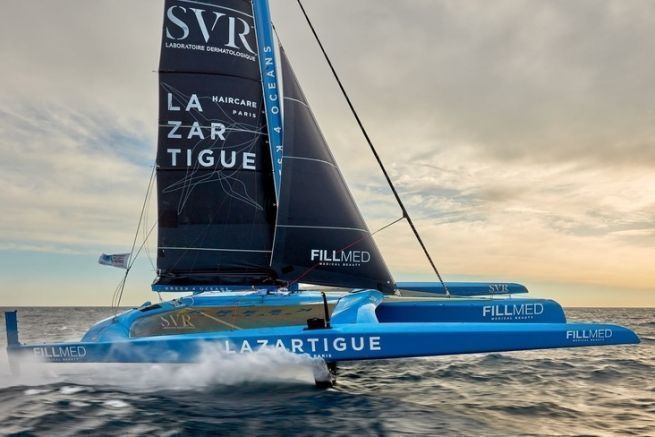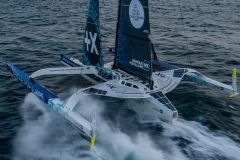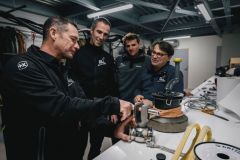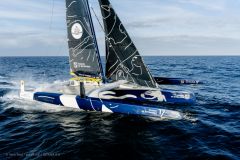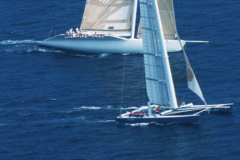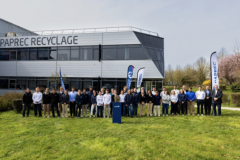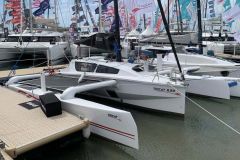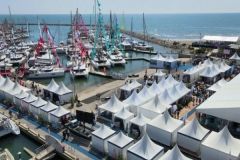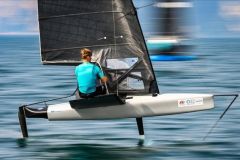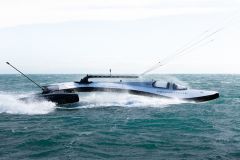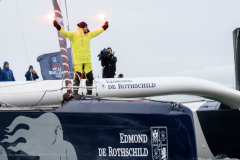Innovative aerodynamics
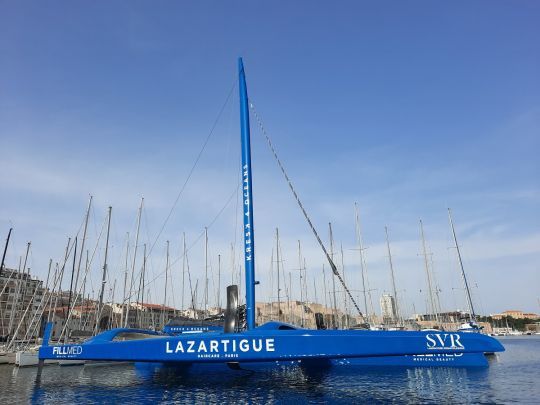
Launched in 2021, SVR Lazartigue has created a surprise by unveiling highly developed shapes and aerodynamics. The deck of the giant trimaran is entirely streamlined, with only the two helm stations protruding, which are themselves protected by canopies whose shapes are reminiscent of fighter plane cockpits. Located on either side of the boom, they offer an unobstructed view of the bow and the sail plan.

This clear deck plan allows the boom to be lowered flush with the deck (like an AC 75 in the America's Cup) improving the "plate" effect and the sail's performance.
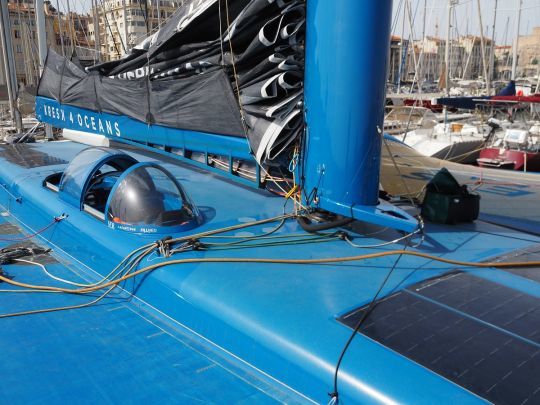
The rear of the central hull is occupied by an open cockpit in which there is a large steering wheel. However, there are no halyards or sheets. This helm station is only used for port maneuvers, or in case of problems with the electric controls installed under the bubbles.
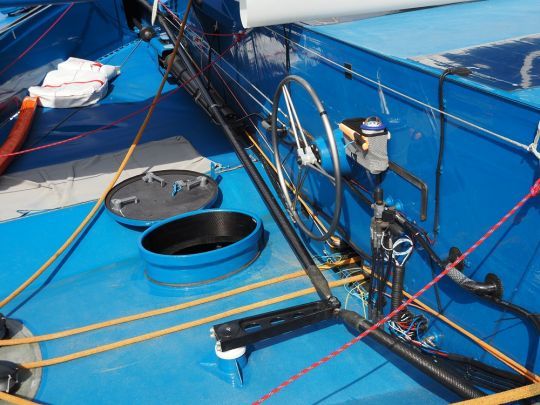
The aerodynamic support of SVR Lazartigue is ensured in particular by the fairings of the arms, which are carried out in very resistant fabric. This work on the aerodynamic shape allows to limit the drag while increasing the lift, and thus to improve the flight. At the level of the central hull, a part of the trampoline has been replaced by this stretched fabric in order to complete the gain brought by these fairings.
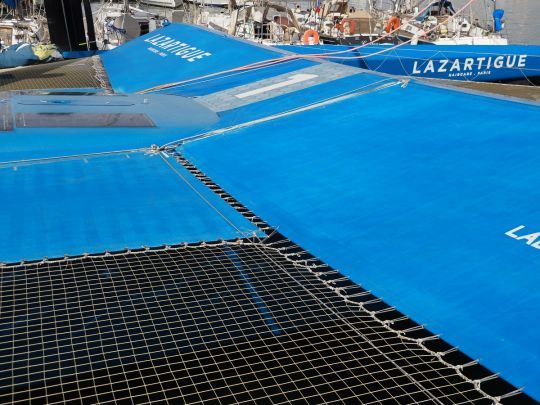
The foredeck is also designed to limit drag, as it is very exposed to flows. The J2 and J3 furlers are lowered from deck level and protected by a structure in which unused sails are stored, as only the J1 is constantly on station.
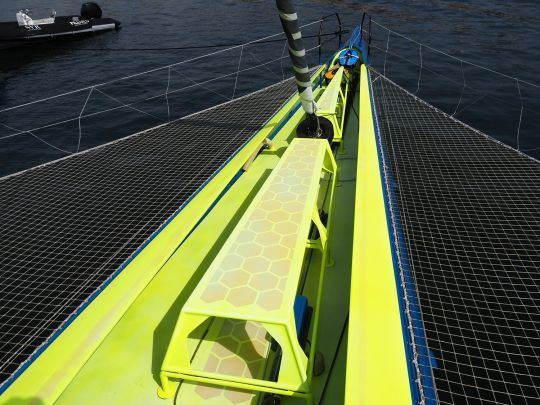
A flying trimaran that aims for 1,000 miles per day
In flight, the trimaran is stabilized on four supports located on :
- the drift
- the central hull rudder
- the float rudder
- the leeward float foil
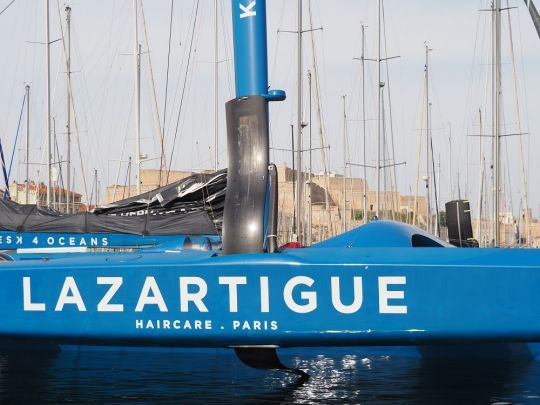
The huge foils, located on each float, ensure a take-off from 12 knots of wind. They are raised when the boat is sailing in light winds, to limit drag. Their thrust is so strong that the trimaran must not be above 8-9 knots to allow the descent movement.
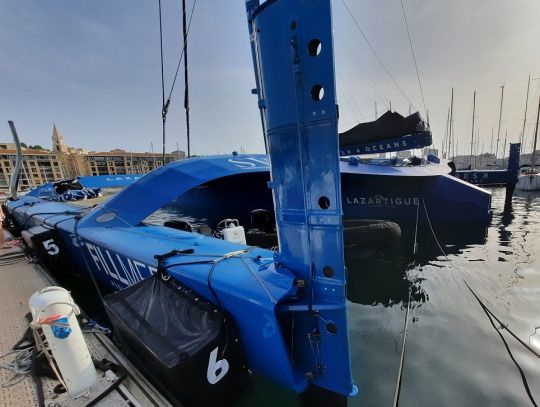
Compared to François Gabart's former trimaran, SVR Lazartigue takes off earlier and maintains a more regular speed in flight. The goal is not necessarily to exceed 50 knots, but to maintain a regular average speed in flight, around 40 knots in optimal conditions.
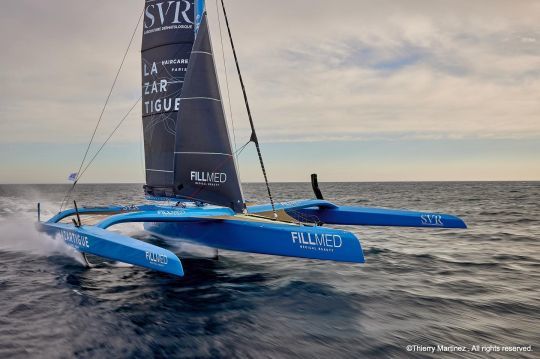
A cockpit protected from the elements
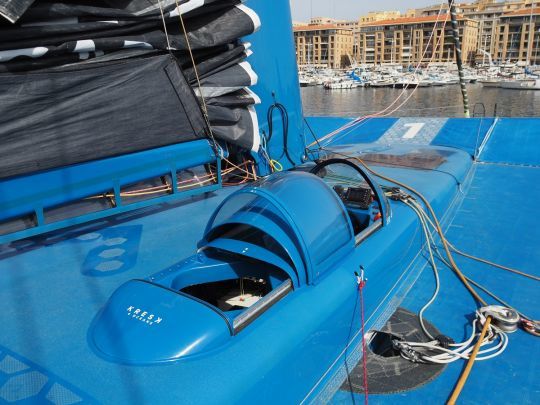
The access to the cockpit requires some contortion, the entry being done by the sliding Plexiglas bubble. The helm station is occupied by a small steering wheel, which does not act directly on the steering sector, but on the autopilot control unit. A force feedback system has been installed to provide the helmsman with steering feel. The main pilot settings are also accessible directly on the steering wheel, by means of several buttons.
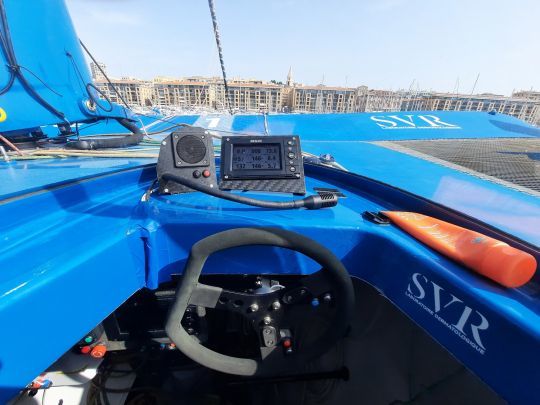
The maneuvering area is made up of four winches, two of which are located forward at the piano and two aft, which take up the foresail sheets.
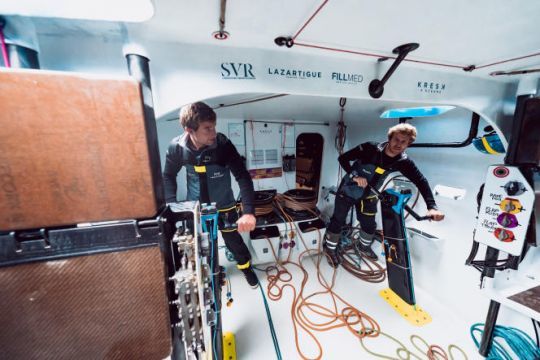
Despite appearances, this maneuvering area is not watertight, because water regularly arrives through the chute of the various maneuvers arriving at the piano, and the bubbles of the helm stations are not hermetic, consequently, scuppers are provided at the level of the deck.
This ultra-protected cockpit philosophy has already been tried with some success in the IMOCA class (notably on Hugo Boss 2 and Corum). And it continues to be emulated in the class, as several projects currently under construction use this architectural choice.
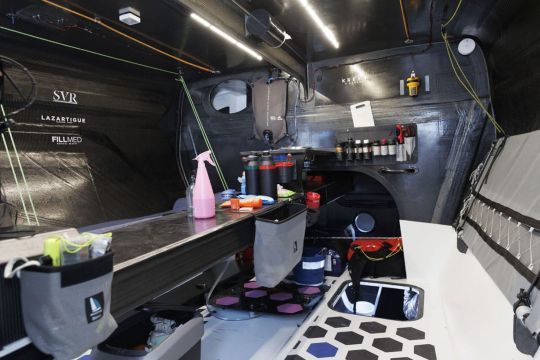
Behind this area dedicated to maneuvering, there is the watertight living cell, which is equipped with two bunks and a central cabinet housing a kitchenette.
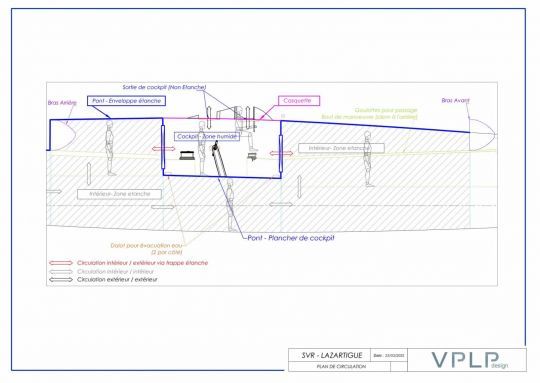
Another watertight cell is located at the front at the mast foot. It gathers various technical elements and the crew's supplies.
Omnipresent hydraulics
Twenty or so hydraulic cylinders are distributed throughout the trimaran in order to absorb the colossal forces to which the main organs to be adjusted are subjected: cunningham, trim tabs, traveler, tension of the cap shrouds, of the props of the headsails and the flying appendages. Their action is only regulated by the physical strength of the crew (or the soloist!), whose work on the coffee grinder feeds the chosen jack.
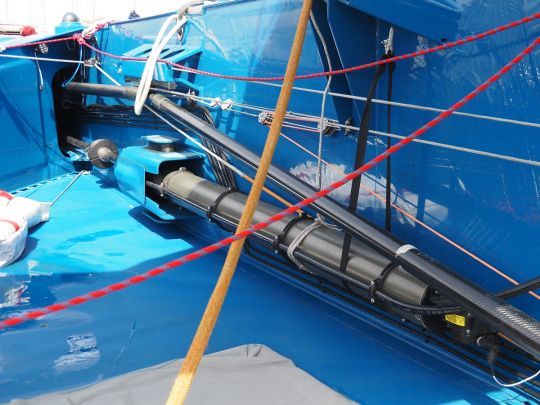
During the flight, thanks to this hydraulic force, the skipper also acts on the foil rake or the leeward rudder flap.
The daggerboard flap is adjusted by a wheel located in the cockpit, which acts directly on the longitudinal balance of the trimaran.
High energy needs
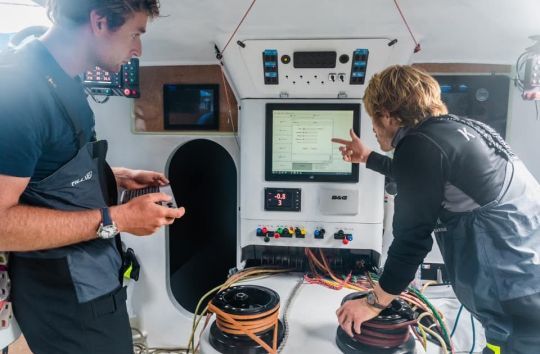
The onboard computer is installed in the maneuvering cockpit. The skipper has access to several screens showing him all the data of the trimaran as well as its navigation software. An interface also gives access to all the cameras on board, which monitor both the trimaran and the water.
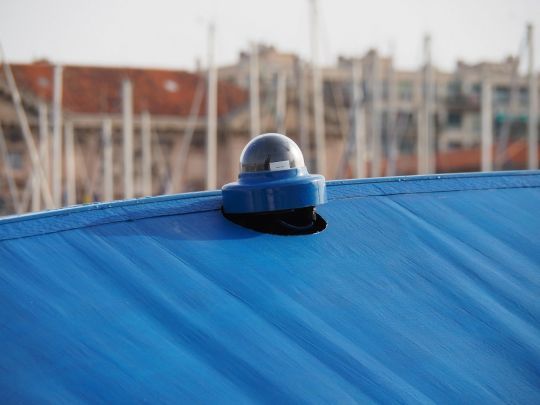
Electricity is supplied by a dozen solar panels spread over the entire deck, as well as a generator installed at the foot of the mast, the idea in the medium term being to replace it with a hydrogen fuel cell.
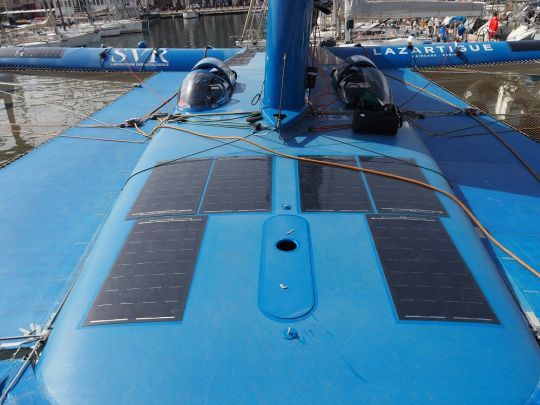
All of the trimaran's key points are equipped with force sensors and strain gauges, via a fiber optic network. Cap shrouds, arms, mast, load-bearing surfaces: all the data is collected and analyzed by the design office, in order to improve the trimaran's performance.
A new record on the Mediterranean
Taking advantage of optimal conditions and a steady mistral wind, François Gabart and four crew members broke the Marseille-Tunis record shortly after our visit, averaging 33.7 knots for almost 14 hours. The previous record, improved by 25 minutes by SVR, dates back to 2010 and was held by the trimaran Banque Populaire, then led by a crew of twelve sailors.
